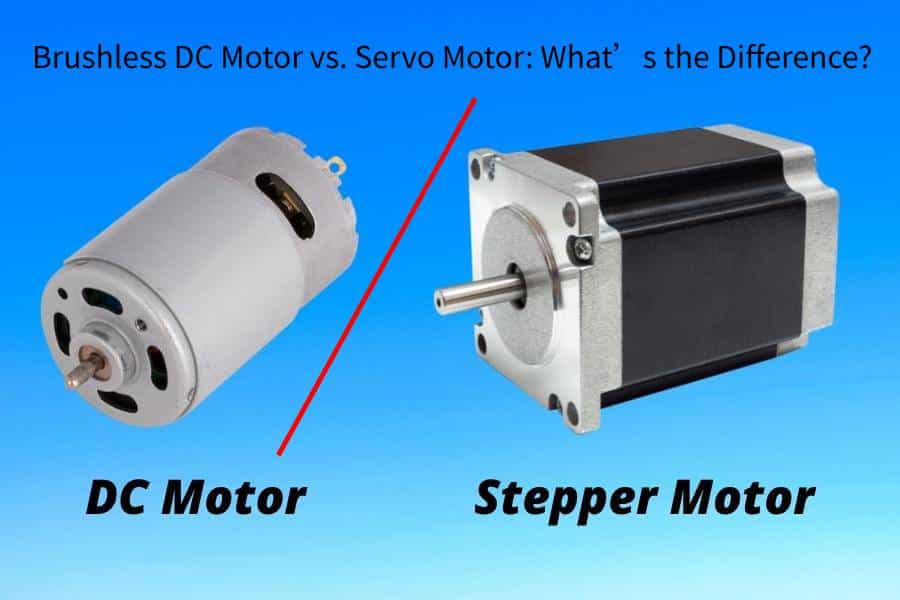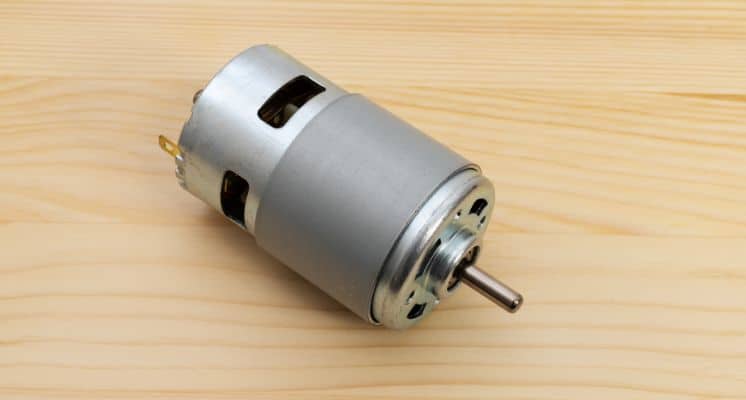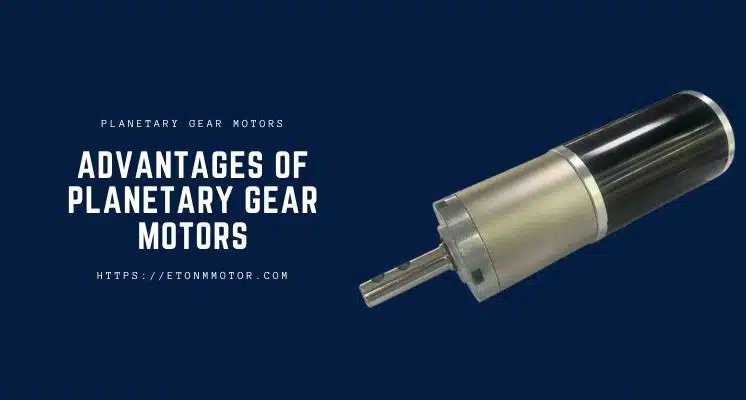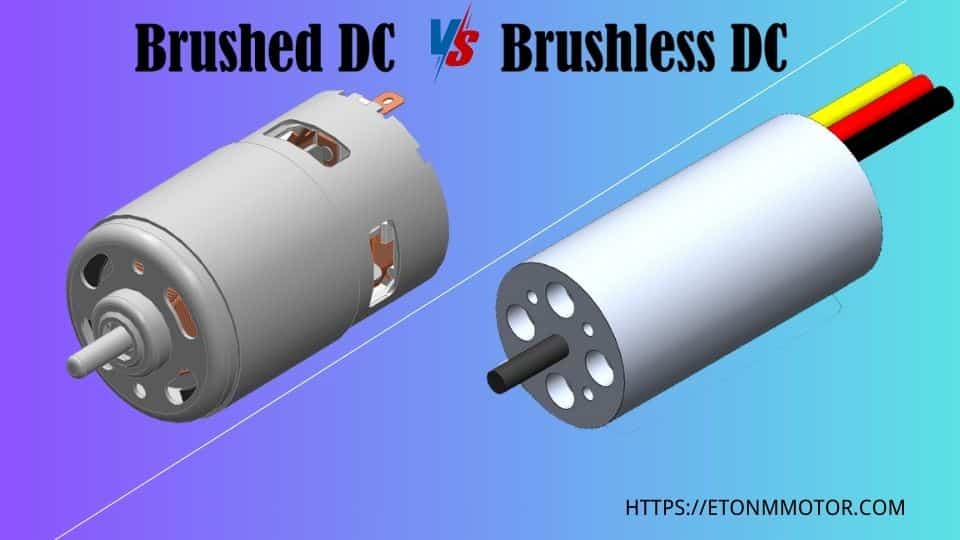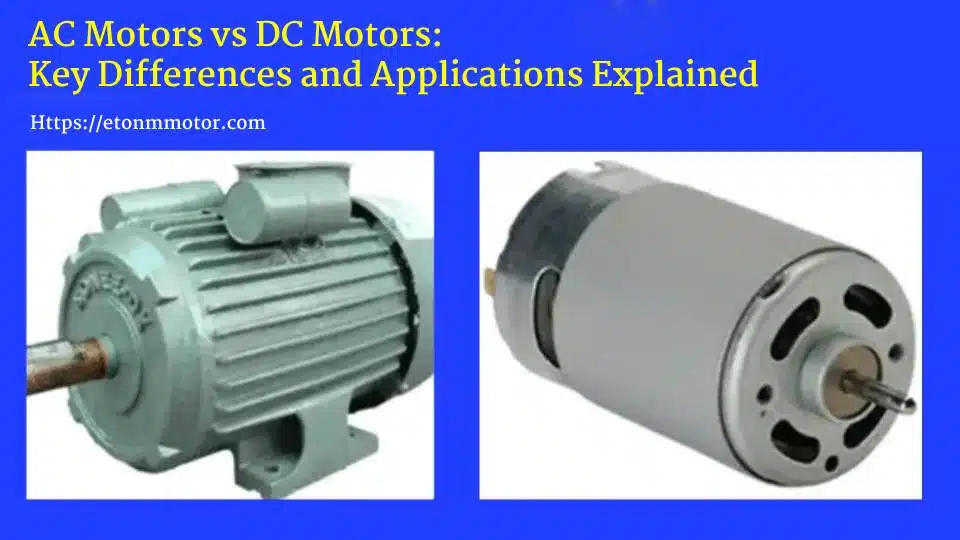Curious about the difference between a Brushless DC Motor and a Servo Motor? This guide breaks down their unique features, applications, and performance to help you choose the right one for your project.
Introduction
Have you ever found yourself scratching your head, wondering whether to pick a Brushless DC Motor or a Servo Motor for your next project? You’re not alone! These two powerhouses are staples in the world of motors, popping up everywhere from smart home gadgets to robotics and even medical devices. As someone who’s spent years digging into motor specs (and occasionally untangling the mess of wires in my own workshop), I can tell you that choosing between a Brushless DC Motor and a Servo Motor isn’t just about flipping a coin—it’s about knowing what each one brings to the table. In this guide, we’ll break down the differences between these two motors in plain English, so you can figure out which one’s the right fit for your needs—whether you’re building a quiet smart lock or a precision-driven robot arm.
What Is a Brushless DC Motor?
If you’ve ever wondered what keeps your cordless drill humming or your smart home fan spinning quietly, chances are you’ve got a Brushless DC Motor—often just called a BLDC—to thank. Unlike its brushed cousins, a Brushless DC Motor ditches the physical brushes and commutators, relying instead on electronic controls to switch the current and keep things moving. This nifty design means less friction, less wear, and a motor that can run efficiently for years with barely a hiccup. At Etonm Motor, we’ve seen these little champs power everything from sanitary dispensers to vending machines, proving their versatility in the real world.
What’s the big deal about going brushless? For starters, a Brushless Motor is a dream when it comes to efficiency—some models hit up to 90% efficiency, according to studies from IEEE. Plus, they’re quieter and need almost no maintenance, making them a go-to for applications where reliability matters, like medical care devices or security systems. Whether you’re a DIY enthusiast or a pro in robotics, the BLDC’s simple yet powerful setup is hard to beat.
What Is a Servo Motor?
Picture this: you’re tweaking a robotic arm to pick up a tiny screw, and it needs to hit the exact spot every single time. That’s where a Servo Motor struts onto the stage. At its core, a Servo Motor isn’t just a motor—it’s a whole system. It typically combines a motor (which could be brushed or brushless), a sensor for feedback, and a control circuit, all working together in a neat little package. This setup is what makes it a rockstar at precision tasks. The sensor constantly tells the controller where the motor is, and the system adjusts on the fly to keep everything spot-on.
Servo Motors shine in situations where control is king. Think about industrial automation, where a conveyor belt needs to stop at precise intervals, or hobbyist projects like remote-controlled planes that demand split-second adjustments. They’re built for accuracy and responsiveness, which is why you’ll spot them in robotics, CNC machines, and even camera stabilizers. Sure, they might be a bit more complex to set up compared to a Brushless DC Motor, but that extra brainpower pays off when you need something moved exactly 45 degrees—no more, no less.
One thing to note: while some Servo Motors use a brushless design (hello, Brushless Servo!), many still rely on brushed motors, depending on the application and cost. Either way, their closed-loop system—meaning they’re always checking and correcting themselves—gives them an edge in high-stakes scenarios. I’ve tinkered with servos in my own projects, and there’s something satisfying about watching them nail a task with pinpoint accuracy, even if it means spending a little extra time wiring them up.
Key Differences Between Brushless DC Motors and Servo Motors
So, now that we’ve got the basics down, let’s dive into what really sets a Brushless DC Motor apart from a Servo Motor. These two might seem like they’re in the same ballpark—after all, they’re both motors, right?—but they’re built for different games. Whether you’re designing a quiet fan for a smart home or a robotic arm that needs surgical precision, understanding their differences can save you a lot of headaches (and maybe a few bucks). Let’s break it down step by step.
Design and Construction
First up, the nuts and bolts of how they’re made. A Brushless DC Motor, or BLDC, is all about simplicity. It’s got no brushes—just a rotor, stator, and some clever electronics to switch the current. That’s it. This streamlined design keeps it lightweight and durable, which is why it’s a favorite for things like electric valves or vending machines at Etonm Motor. On the flip side, a Servo Motor is more like a mini-team. It’s not just a motor; it’s got a feedback sensor (usually a potentiometer or encoder) and a controller baked in. Some servos even use a brushless motor inside, but plenty still stick with brushed ones—it depends on the job and the budget.
Control and Precision
Here’s where things get interesting. A Brushless Motor is a bit of a free spirit—it spins efficiently and reliably, but it doesn’t come with built-in smarts. If you want precise control, you’ll need to pair it with an external controller or driver, which can tweak speed and torque. That’s fine for applications like pumps or fans where steady performance beats pinpoint accuracy. Servo Motors, though? They’re the control freaks of the motor world. Thanks to that closed-loop feedback system, they’re always checking their position and adjusting in real time. Need to rotate exactly 90 degrees for a robotics project? A servo’s got your back, no extra gear required.
Cost and Complexity
Let’s talk practical stuff: your wallet and your patience. A Brushless DC Motor tends to be the budget-friendly option. Its simpler design means lower production costs and less fiddling during setup—plug it in, hook up a controller, and you’re good to go. I’ve swapped out a BLDC in a smart dispenser in under an hour, no sweat. Servo Motors, with their fancy feedback systems, come with a higher price tag and a steeper learning curve. Wiring up the controller and tuning it can feel like assembling a puzzle, especially if you’re new to it. But for tasks where precision trumps everything—like a CNC machine carving intricate parts—that extra effort is worth it.
Performance and Efficiency
Performance is where these two flex their muscles differently. A Brushless DC Motor is an efficiency champ, often hitting 85-90% efficiency (per IEEE data), thanks to its low-friction design. It’s perfect for long-haul tasks where you want minimal heat and maximum runtime, like in medical devices or security systems. Servo Motors can be efficient too, especially the brushless kind, but their performance hinges more on responsiveness than raw endurance. They’re built to start, stop, and adjust quickly, which can chew through more power in dynamic setups like industrial automation. I’ve seen BLDCs quietly churn away for hours, while servos steal the show in short, precise bursts.
Which One Should You Choose?
By now, you’ve probably got a decent feel for how a Brushless DC Motor stacks up against a Servo Motor. But here’s the million-dollar question: which one’s right for your project? It’s not about picking the “better” motor—honestly, they’re both awesome in their own ways—it’s about matching the tool to the task. Whether you’re tinkering with a DIY gadget in your garage or designing a high-tech solution for robotics, let’s figure out what fits. I’ll walk you through some real-world scenarios to make the decision a little less daunting.
If you’re after efficiency and simplicity, a Brushless DC Motor might be your best buddy. These motors are champs at running smoothly for hours with minimal fuss, making them perfect for stuff like fans, pumps, or smart home devices. Take something like a sanitary dispenser—Etonm Motor’s BLDC motors keep those humming quietly and reliably, no babysitting required. They’re also a solid pick when maintenance is a pain point, like in security systems or vending machines tucked away in hard-to-reach spots. You get high efficiency (think 85-90% per IEEE stats), low noise, and a lifespan that’ll outlast your favorite pair of sneakers—all without breaking the bank.
On the other hand, if precision is your top priority, a Servo Motor is tough to beat. Imagine you’re building a robotic arm that needs to grab a tiny bolt or a camera gimbal that can’t afford to wobble. That’s where a servo’s closed-loop magic shines—it locks onto exact positions and adjusts in real time, no guesswork involved. I’ve used servos in hobby projects like a mini drone, and there’s nothing quite like watching it hover steady as a rock thanks to that pinpoint control. They’re the go-to for robotics, industrial automation, or anything where “close enough” just won’t cut it. Sure, they’re pricier and trickier to set up, but for accuracy-driven jobs, it’s money well spent.
Still torn? Think about your project’s demands. If it’s all about steady, long-term performance—like a medical device that runs 24/7—a Brushless Motor keeps things humming without drama. But if you need quick, precise movements—like a valve actuator in a metering system—a Servo Motor’s responsiveness could save the day. I’ve seen folks mix and match too, using BLDCs for raw power and servos for fine-tuning in the same setup. Whatever you choose, it’s less about specs on paper and more about what’ll make your life easier when the rubber hits the road.
Conclusion
So, there you have it—a head-to-head rundown of Brushless DC Motors versus Servo Motors. If there’s one thing to take away, it’s this: neither motor is the “winner” outright; it all boils down to what your project needs. A Brushless DC Motor brings efficiency, durability, and a no-nonsense vibe to the table—perfect for keeping things spinning smoothly in smart homes or medical devices. Meanwhile, a Servo Motor flexes its muscles with precision and control, making it the MVP for robotics or any gig where accuracy is non-negotiable. Knowing the difference is half the battle; the rest is just picking the right fit for your next big idea.
Now that you’re armed with the scoop, why not put it to use? If you’ve got a project in mind—or even a wild story about a motor mishap—drop it in the comments below; I’d love to hear how you’re tackling your builds. And if you’re still curious about how these motors play out in real life, swing by Etonm Motor’s Brushless DC Motor page for some inspiration—or check out more motor tips on our blog. Whatever you’re working on, here’s to making it move like a dream!
Related Reading
- Why Choose 24v Small DC Motors?
- Introduction of 12V DC Micro Motor Products
- How to Choose the Right BLDC Motor for Robotics Applications
- Top 5 Applications of Brushless DC Motors in Industrial Automation
- Brushless DC Motors in Medical Devices: The Ultimate Guide to BLDC Motor Applications
- Why BLDC Motors Are the Future of Electric Vehicles: A Complete Guide
- What Factors Affect the Performance of Brushless Motors? A Comprehensive Guide
- How to Choose the Right Brushless Motor for Your Drone: A Complete Guide
- How to Choose the Right Brushless Gear Motor for Your Application
- Brushless DC Motors: Key Uses in Smart Home, Medical & Robotics
- Power Up Precision: High-Speed Brushless DC Motors for Screwdrivers
- BLDC Motor vs Brushed Motor: Which is Better for Your Needs?
- AC Motors vs DC Motors: Which is Best for Your Application?

